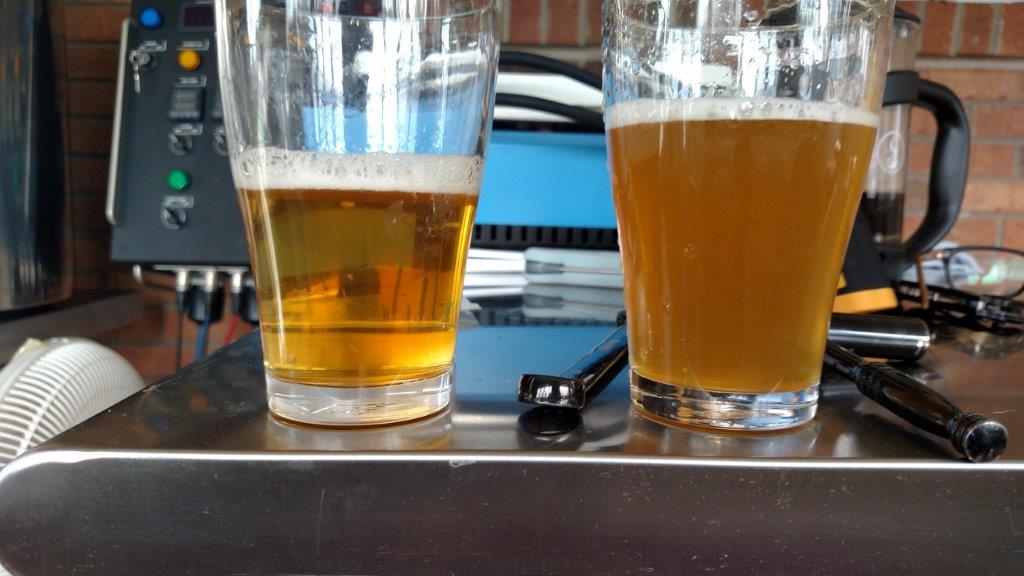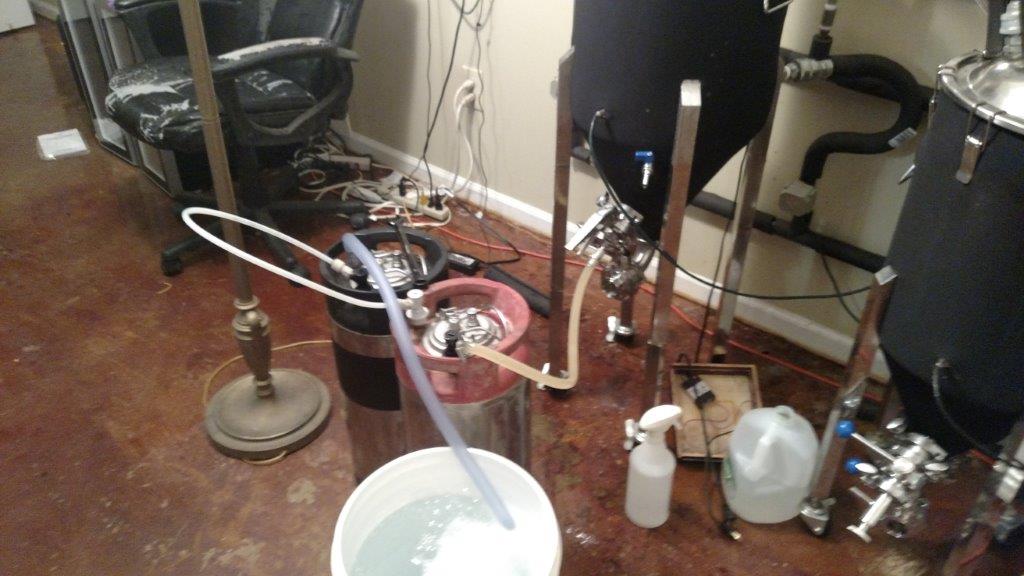Recommendations are to keep less than 0.03ppm uptake at packaging (bottling, canning, kegging) to be able to achieve the <0.20ppm goal.
I'm SURE of nothing as I have been unable to find a DO meter that is good for this application in a reasonable price range. What yeast is left over (I have very little to no visible yeast) will scavenge the O2 remaining ONLY if there are fermentables remaining. Bottlers get a little leeway here. The typical "off" flavors and instability that comes from oxidation is the end of a multistep reaction though, as the yeast are scavenging the O2 (if there are fermentables) the O2 is reacting to create the preceptors that we want to avoid.
My ever changing and (hopefully improving) kegging setup is:
- Cold crash in conical under CO2 pressure
- purge kegs by filling with StarSan solution
- sloshing to remove air bubbles from the top out the dip in as much as possible
- Push StarSan solution from one keg to another
- for 10 gallon batches hook the OUT from one keg to the IN from the first keg
- connect a keg QDC to a length of hose ending in a triclamp connection
- sanitize the triclamp racking port of the fermenter
- submerge the QDC, hose and triclamp in StarSan so that the tubing is full
- hook the QDC to the pressurised keg, (hopefully) pointing the triclamp into the bucket of StarSan
- Star san will shoot out of the tubing, with ~30-40 seconds of CO2 following
- connect the triclamp to the fermenter while the CO2 is coming out of the tube
- hook a QDC to the second keg IN with the end of the hose submerged in Starsan
- open fermenter racking valve, CO2 pressure will begin filling the fist keg
- once the first keg is full the second keg will start to fill
Of course these recommendation levels are for commercial breweries. Pasteurization has effects that very dependent on the DO. Commercial breweries also target longer shelf lives than MANY homebrewers.

















































![Craft A Brew - Safale S-04 Dry Yeast - Fermentis - English Ale Dry Yeast - For English and American Ales and Hard Apple Ciders - Ingredients for Home Brewing - Beer Making Supplies - [1 Pack]](https://m.media-amazon.com/images/I/41fVGNh6JfL._SL500_.jpg)










